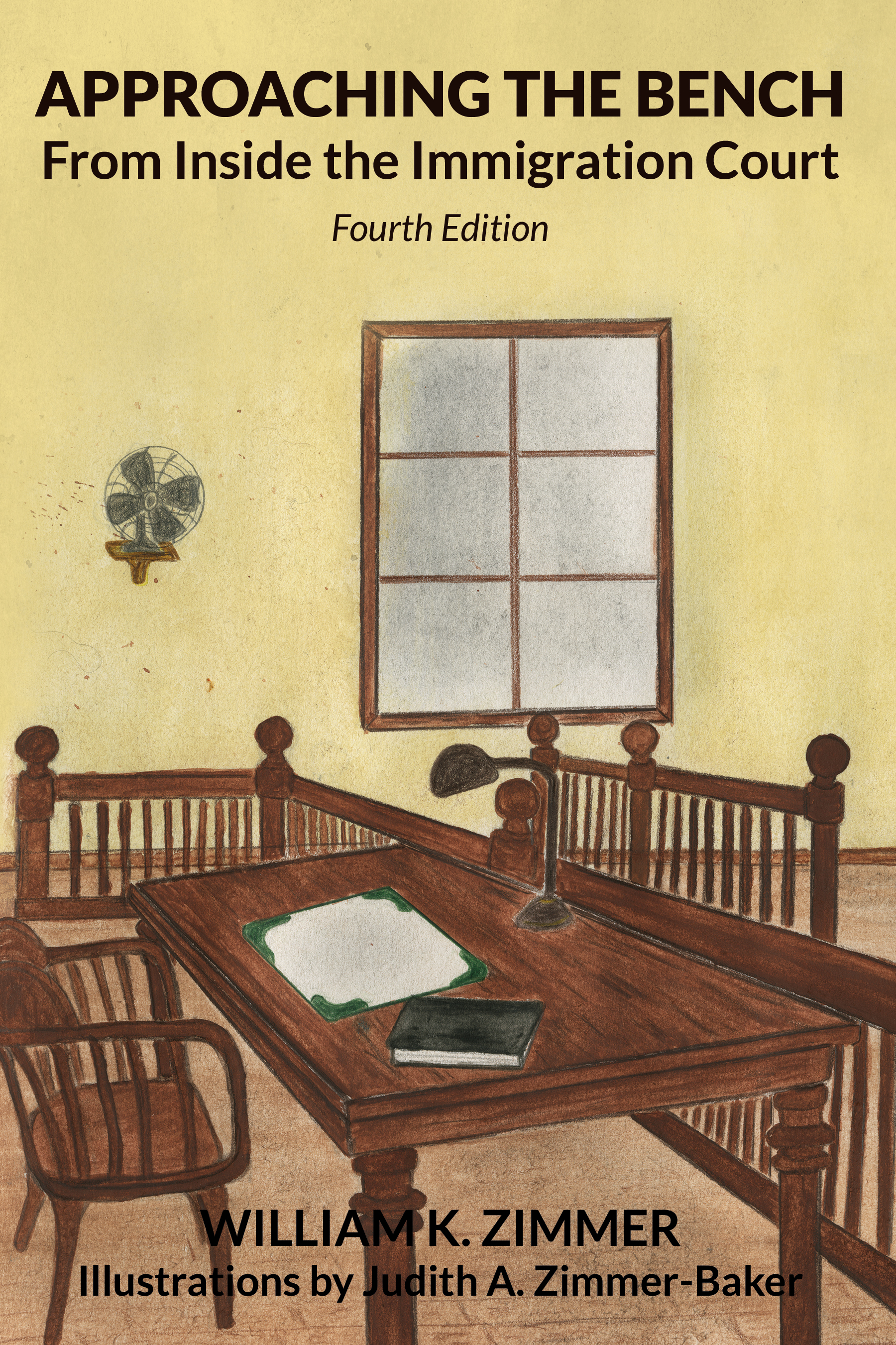A High Seas Adventure And The Cuban Adjustment Act of 1966
The story begins with the captain of a fishing vessel owned by the Cuban government. The captain was a seasoned sailor with 30 years of experience on Cuban fishing boats in the Caribbean. His weathered face was deeply creased as if it had been severely stamped on to smooth, brown leather with the soft, durable texture of a well-worn shoe. His stoic presence inspired confidence. Indeed, he had gained the confidence of the Cuban government through responsible decision making, natural leadership qualities and navigational skills which translated to promotions from crewman (as a youth) to the status of captain.
In spite of his position of trust in the eyes of the Cuban Fishery agency, this quiet captain executed a decision to flee Cuba using the Cuban fishing vessel he commanded with a skeleton crew to sail to Florida where he surrendered his command to the United States government at Fort Lauderdale. This action led to a formal demand for the return of the fishing vessel and crew by the Cuban government. The United States returned the fishing vessel, but not the crew who sought adjustment of status under the Cuban Adjustment Act of 1966.
Under the Cuban Adjustment Act of 1966, any alien who is a native and citizen of Cuba is eligible for adjustment to lawful permanent resident status in the United States if the applicant:
1) was inspected and admitted or paroled into the United States subsequent to January 1, 1959;
2) has been physically present in the United States for at least 1 year;
3) is eligible to receive an immigrant visa; and
4) is admissible to the United States for permanent residence.
The former Immigration and Naturalization Service (“INS”) paroled the crew of the purloined fishing vessel into the United States where they were required to wait for at least 1 year before applying for adjustment of status.
Due to perceived emergent developments in Cuba impacting family members of the defectors, the captain and three other Cuban nationals, in a bold effort of self-help, developed a plan to rescue fifteen of their family members from feared oppression by the Cuban government.
One of the captain’s companions ordered and received shipment of materials and instructions for building a 25 ft. boat. Upon assembly, a single engine outboard motor was chosen for propulsion. According to the record of proceedings, this boat was capable of about 7 knots, which was the top speed of Columbus’ fleet of caravels. Actually, some opine that with a favorable gale wind Columbus could make about 12 knots (as long as the sails and rigging held together).
Returning to the rescue expedition, four men set out from Key Largo on July 15, 1994 in a 25 ft. homemade boat with the captain as the navigator to make an approximate 388 mile voyage (one way as the crow flies) to Gibara, Cuba.
The only navigation instrument in the captain’s possession was a compass; another parallel with Columbus, except Columbus also employed an hour glass, astrolabe and quadrant for navigation.
On July 19, the expedition encountered two endangered rafters and took them aboard. Near midnight on July 19, the seafarers conducted a rendezvous with 15 family members just off the coast of Cuba near Gibara.
The 25 ft. homemade boat was then dangerously overloaded and great care had to be taken to avoid swamping and sinking. It contained 21 souls and laboriously wended its way into international waters just North of Cuba and South of the Bahamas.
Next, the engine of the laboring boat began to sputter, and began to fail.
The waters between the coasts of Florida and Cuba, due to the Gulf Stream, silently and relentlessly draw floating objects out into the Atlantic Ocean. If the Captain’s small craft lost engine power he knew that all persons aboard would face a horrifying death at sea through exposure, dehydration and starvation. Sinking and drowning in this circumstance would seem merciful.
According to United States Coast Guard reports, not long after the expedition members had picked up their family members, the USCG cutter, Spenser, encountered the faltering, overladen boat and took it in tow out of concern for the safety of the occupants.
Later, the boat and its occupants were transferred to the USCG vessel, Cushing, which took the expedition members and their passengers to a United States Coast Guard station in Florida.
Upon arriving in the United States, the former INS promptly placed the captain and at least one other companion (hereinafter referred to as applicants) in exclusion proceedings, charging them under section 212(a)(6)(E)(i) of the Immigration and Nationality Act (“the Act”) for encouraging and aiding other aliens to attempt unlawful entry to the United States (i.e. alien smuggling) and section 212(a)(7)(A)(i)(I) of the Act as immigrants without an immigrant visa.
Obviously, if the captain and his companions were found excludable for alien smuggling they would be inadmissible to the United States as immigrants and disqualified for adjustment of status under the Cuban Adjustment Act of 1966. As noted above, an applicant for adjustment under the Cuban Adjustment Act of 1966 must be eligible to receive an immigrant visa and admissible to the United States for permanent residence.
In support of its smuggling charge, the former INS presented the report of a deceased Border Patrol anti-smuggling agent who had interviewed all four expedition organizers before his demise, the report of another immigration officer who initially interviewed them upon the USCG vessel, Cushing’s arrival in Florida, and the testimony of a supervisory anti-smuggling Border Patrol agent.
The reports, however, contained conflicting information about the location where the applicants were first sighted by the United States Coast Guard; a difference in distance of about 200 miles which placed the sighting closer to Florida.
In addition, the supervisory anti-smuggling agent who testified for the former INS admitted that the late Border Patrol anti-smuggling agent had conducted an interview at 2:35 a.m. of four individuals as a group; obtained all four signatures on the same statement; inserted information from documents into the statement; and signed the statement himself as a witness instead of as a subscribing officer.
The supervisory anti-smuggling Border Patrol agent admitted that the reporting agent had not followed proper procedure, but speculated that the agent may have been tired at the time the statement had been taken, and that the case was not a high priority case.
The former INS submitted the Coast Guard reports which agreed with the testimony of the captain and his fellow applicant regarding the details of their initial encounter with the USCG Spenser and transfer to USCG vessel, Cushing.
The former INS also submitted United States registration documents and tax records relating to the applicants’ homemade boat.
For his part, the captain maintained that he and the other expedition organizers always intended to pick up their family members near Gibara, Cuba and take them to the Bahamas.
The former INS contended that, based on the government’s evidence, the applicants intended to bring their family members directly to the United States.
In addition to noting communication difficulties with the immigration officer who initially interviewed him upon the USCG Cushing’s arrival in Florida, the captain admitted that they ultimately wanted to go to the United States; but gave the following reasons for planning to first take his companions and family members to the Bahamas:
- He did not want to be charged in the United States with smuggling, which he believed would complicate their chances for legal residence.
- The route to Nassau from Gibara was shorter (approximately 400 miles as opposed to the 580 – 600 miles route to Florida). (Here it should be noted that the captain’s dead reckoning overstated the actual distances between both Gibara and Florida and Gibara and Nassau. As the crow flies, the distance from Gibara, Cuba to Key Largo, Florida is about 388 miles and the distance from Gibara, Cuba to Nassau in the Bahamas is about 282 miles; about a 106 mile difference.)
- The route to Nassau passed by numerous small islands which would serve as safe harbors to stop and disembark the small boat if necessary.
- An attorney with whom he had previously communicated lived in Nassau and the captain believed the attorney might be able to help all of them enter the United States legally.
The captain admitted that his last contact with the attorney was in 1984, and that he was not sure this attorney was still in Nassau. He also admitted that he intended to enter Nassau at 10:00 or 11:00 p.m. illegally.
The captain insisted that he never told the Coast Guard or any other United States official that he was heading for the United States after picking up the two rafters and the fifteen family members near Gibara, Cuba on July 19, 1994.
However, the captain testified that he had told the Coast Guard that he and the other three expedition organizers were United States residents.
Based on the credibility of the captain whose 30 years of navigating the waters off the coast of Cuba had informed his choice of the safest route for himself and his twenty passengers, including friends and loved ones, in a 25 ft. open boat on the high seas; and the fact that the Coast Guard had taken control of the captain, his boat and passengers in international waters and transported them outside of their control to the United States, the smuggling charge was not sustained. Thus, since they had been paroled pending immigration court proceedings, the captain and his crew remained eligible for adjustment of status under the Cuban Adjustment Act of 1966.
Ultimately, the Board of Immigration Appeals affirmed the decision of the Immigration Judge.
Most immigration hearings end with tears of sorrow or tears of joy without much middle ground. It seems that this high seas adventure story must have ended in tears of joy for all participants.

